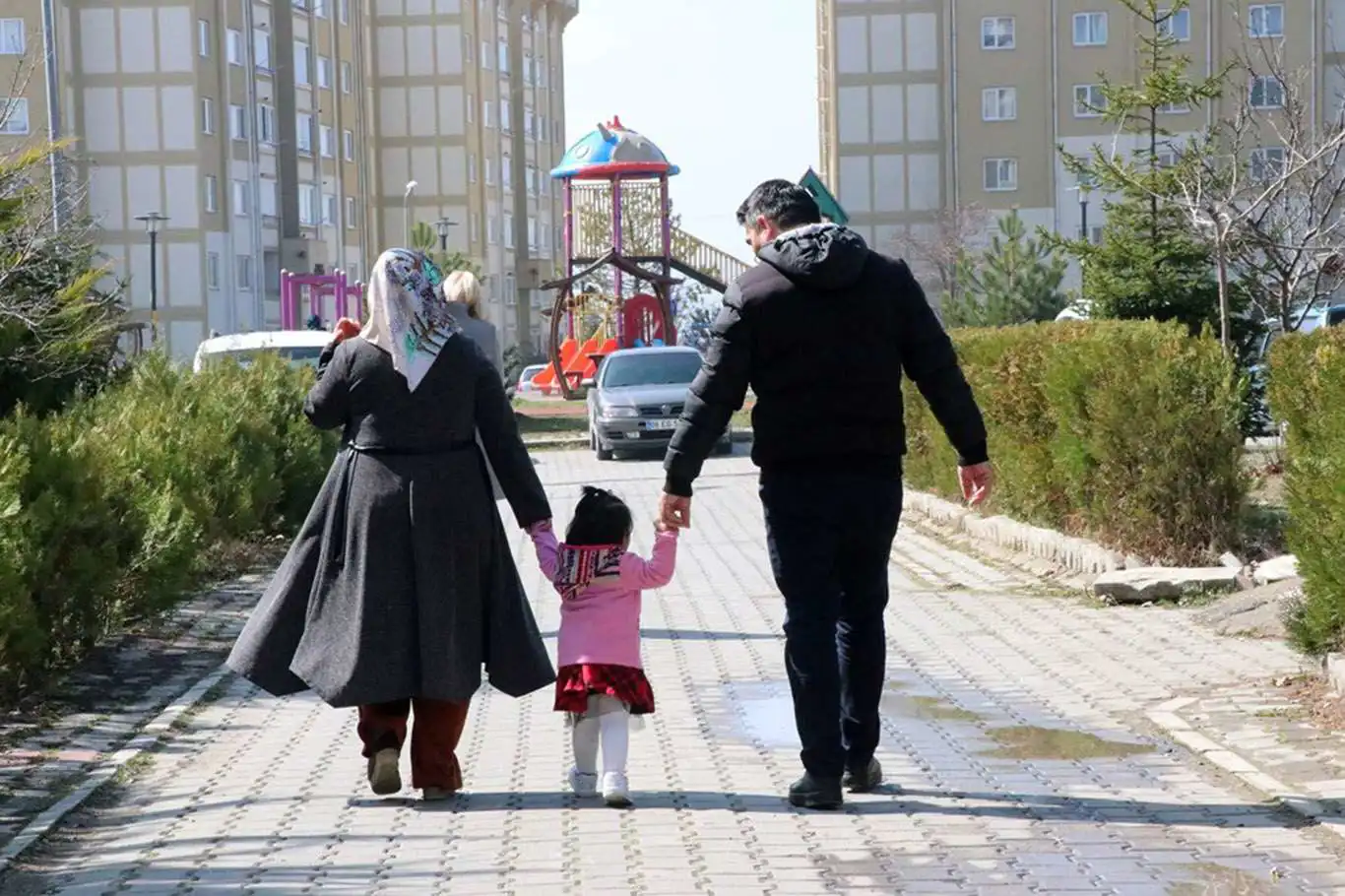Household structure in Türkiye continues to evolve, TurkStat data shows


Türkiye’s household landscape is undergoing significant changes, with the average household size shrinking, one-person households on the rise, and stark regional differences in family structures.
According to the 2024 Address Based Population Registration System (ABPRS) results released Wednesday, the average household size in Türkiye dropped to 3.11 persons in 2024, down from 4 in 2008, reflecting a steady trend toward smaller households.
Şırnak led the nation with the largest average household size at 4.85 persons, followed by Şanlıurfa (4.63) and Batman (4.50). Conversely, Giresun and Çanakkale recorded the smallest households, both at 2.53 persons, with Tunceli (2.55) and Eskişehir (2.59) close behind.
One-Person Households Surge
The proportion of one-person households climbed to 20% in 2024, up from 14.9% in 2016, signaling a growing trend of solo living. Gümüşhane topped the list with 31.7% of households consisting of a single person, followed by Tunceli (29.8%) and Giresun (29.7%). Batman had the lowest share of one-person households at 11.1%, trailed by Van (11.9%) and Diyarbakır (12.3%).
Family Structures Evolve
One-family households, comprising couples with or without children or lone parents with at least one child, fell to 63.5% in 2024 from 66.4% in 2016. Gaziantep had the highest proportion of one-family households at 71.4%, while Tunceli had the lowest at 50.5%. Extended-family households, which include a nuclear family plus non-family members, also declined to 13.3% from 16.3% in 2016, with Hakkari leading at 20.3% and Eskişehir recording the lowest at 9.2%. Multi-person no-family households, where members are unrelated, rose slightly to 3.2% from 2.4%.
Lone-Parent Households and Regional Variations
Lone-parent households made up 10.9% of total households, with 8.4% led by mothers and 2.6% by fathers. Bingöl had the highest proportion of lone-parent households at 13.5%, with lone mothers most prevalent in Bingöl (10.6%), Elazığ (10.3%), and Adana (10.1%). Kilis led in lone-father households at 3.9%, while Ardahan had the lowest share of lone-parent households at 8%.
Children and Elderly in Households
In 2024, Türkiye had 26.6 million households, with 42.8% including at least one child aged 0-17. Şanlıurfa had the highest proportion of such households at 68.5%, while Tunceli had the lowest at 28.2%. About 25.3% of households included at least one person aged 65 or older, with 1.75 million elderly individuals living alone. Additionally, 72.6% of never-married individuals aged 25-29 lived with their parents, with a notable gender split: 44.8% male and 27.9% female.
Marriage Trends and Cousin Marriages
Marriages between first cousins continued to decline, dropping to 3.3% of total legal marriages in 2024 from 5.9% in 2010. Şanlıurfa had the highest rate of cousin marriages at 16.9%, while Artvin recorded the lowest at 0.2%. Mardin led in individuals married to relatives, with 19.9% of legal marriages involving first cousins.
Family as a Source of Happiness
The 2024 Life Satisfaction Survey revealed that 72.9% of individuals cited their families as their primary source of happiness, followed by children (13.2%) and personal fulfillment (4.2%).
Challenges for Children and Families
Among Türkiye’s 21.8 million children, 258,515 had lost their father, 81,373 their mother, and 5,276 both parents. Additionally, 15,135 children were in institutional care, while 10,430 were cared for by 8,719 foster families. Divorce affected 186,536 children in 2024, with 74.4% of guardianship cases awarded to mothers.
Technology and Poverty Trends
Household access to technology has soared, with 96.4% of households having internet access in 2024, up from 7% in 2004. Portable computer ownership rose to 45.2%, and 99.6% of households owned a mobile or smartphone. However, poverty remains a concern, with 21.2% of individuals at risk of poverty. Extended-family households faced the highest poverty rate at 26.9%, compared to 11.7% for one-person households.
Housing and Environmental Issues
Over half (56.1%) of individuals owned their homes, while 28% were tenants. Common housing issues included leaking roofs or damp walls (31.3%), heating problems (30.2%), and environmental pollution (21.7%).
Türkiye’s household trends reflect a shift toward smaller, more individualistic living arrangements, with regional disparities highlighting diverse cultural and economic realities. As solo households rise and traditional family structures wane, policymakers face new challenges in addressing poverty, housing, and social support systems. (ILKHA)
LEGAL WARNING: All rights of the published news, photos and videos are reserved by İlke Haber Ajansı Basın Yayın San. Trade A.Ş. Under no circumstances can all or part of the news, photos and videos be used without a written contract or subscription.
İpek Baz, Chair of the Women’s Branch of the HÜDA PAR Diyarbakır Provincial Directorate, has drawn attention to a growing crisis in women’s healthcare access in Türkiye’s southeastern region.
In 2024, Türkiye recorded significant internal migration, with 2,682,673 people relocating across provinces, according to data released by the Turkish Statistical Institute (TurkStat) on Monday.
A child has died from measles at Alder Hey Children’s Hospital in Liverpool, marking the second child fatality from the virus in the UK this decade, health officials have confirmed.
As the world commemorates World Population Day, a United Nations initiative launched in 1989 to raise awareness about population and development challenges, the latest 2024 United Nations population estimates position Türkiye as a significant player in global demographics.